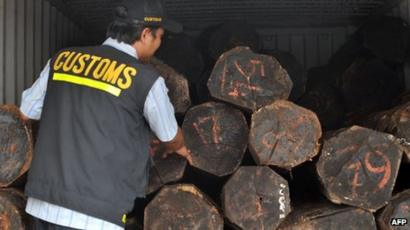
An analysis of EU trade data by the FLEGT Independent Market Monitor (IMM), an ITTO project funded by the EU, shows that FLEGT licensed products from Indonesia, particularly wooden furniture and doors, were on course to be the biggest winners in the EU tropical timber market last year.
Overall the EU’s trade in tropical wood and wooden furniture products was more buoyant in the first nine of months of 2019 than the same period in 2018.
The 12-month rolling total fell to a low of US$3.99 billion in June 2017 but had rebounded to US$4.35 billion by September 2018 and gained an additional US$0.28 billion in the following 12 months to reach US$4.63 billion by September 2019.
Initially, the recovery in the US dollar value of EU imports was driven by exchange rate fluctuations as the euro increased sharply in value against the US dollar in 2017. However, from mid-2018 to mid-2019, the euro was weakening against the US dollar and the rise in dollar import value coincided with a genuine increase in import quantity. The 12-month rolling total quantity of EU tropical wood and wooden furniture imports dipped to 2.5 million metric tonnes (MT) in March 2018, then increased to 2.8 million MT in June 2019, remaining at that level through to September 2019.
Indonesian Licensed products feature prominently in the league table of the largest gains in EU tropical wood product imports in the year to September 2019.
Indonesian furniture led the way with imports in the year to September 2019 being US$61.7 million greater than in the previous 12-month period. Indonesian joinery products were in second place, gaining US$37.9 million in the same period. Indonesian mouldings/decking made it on to the list of big gainers, adding US$12.7 million.
There was also a small gain in EU imports of Indonesian plywood, which were US$3.6 million greater in the year to September 2019 compared to the previous 12-month period.
This occurred despite a background of intense direct competition from Russian birch plywood products. IMM contacts with EU plywood importers suggest that prices for Russian products are highly competitive due both to low prices for birch logs in Russia and continuing weakness of the Russian rouble.
Amongst VPA countries other than Indonesia, significant gains were also seen in EU imports of furniture from Vietnam and Malaysia, joinery (mainly laminated wood) from Malaysia, and sawnwood from Cameroon and the Republic of Congo.
Less positive from a FLEGT perspective is that two Indonesian product groups – sawnwood and veneer – also appear in the list of the biggest losers in the year to September 2019, although the deficits are more moderate than for Malaysia which suffered a particularly sharp decline in EU imports of sawnwood.
Much of the recent growth in EU imports of Indonesian wood and wooden furniture products has been destined for the Netherlands and UK. Last year’s surge in imports of Indonesian wooden furniture was destined mainly for the Netherlands. The UK is the largest growth destination for wooden doors and plywood from Indonesia. Most EU imports of decking and mouldings from Indonesia are destined for Germany and the Netherlands.





